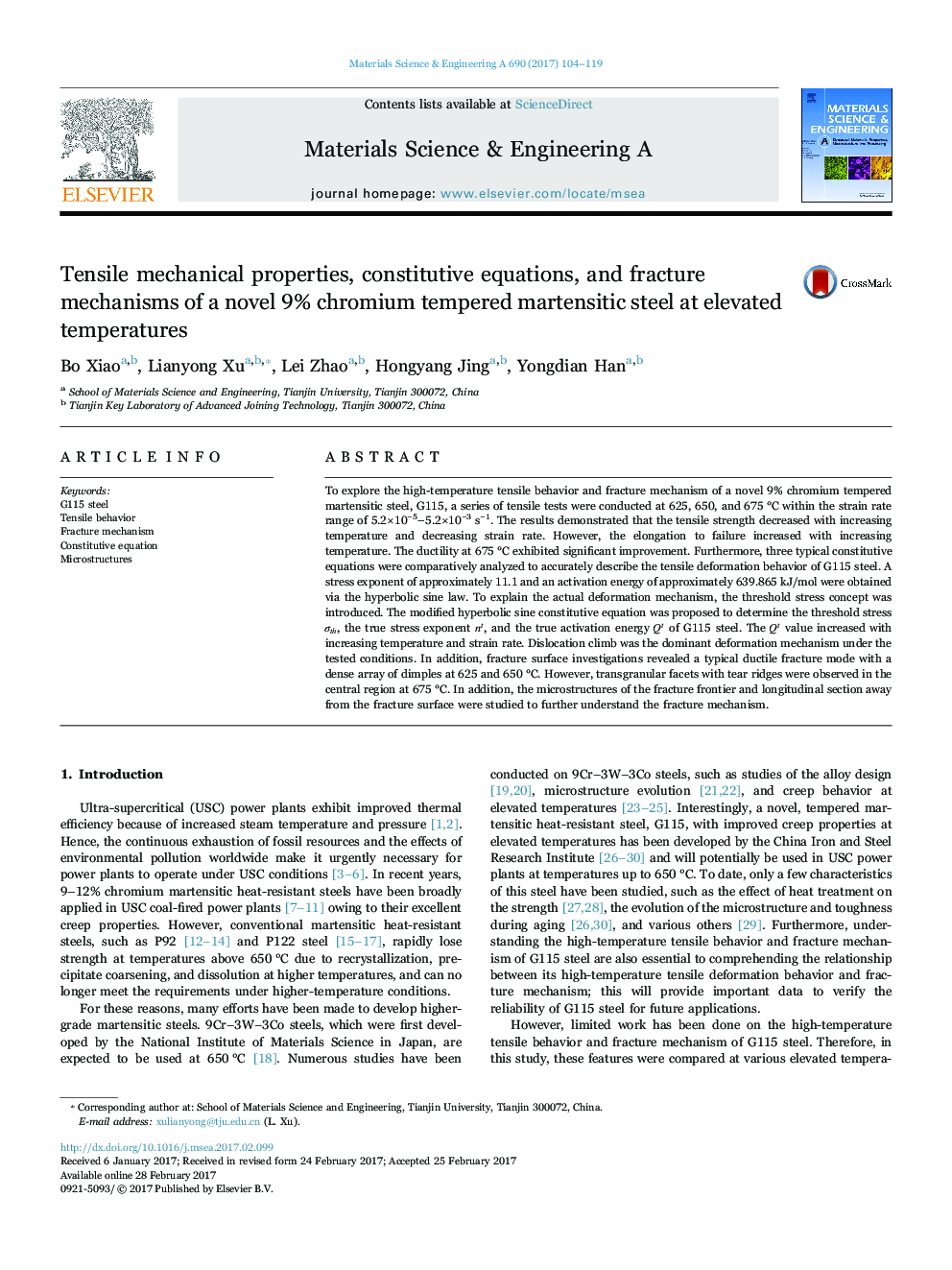| Article ID | Journal | Published Year | Pages | File Type |
|---|---|---|---|---|
| 5455939 | Materials Science and Engineering: A | 2017 | 16 Pages |
Abstract
To explore the high-temperature tensile behavior and fracture mechanism of a novel 9% chromium tempered martensitic steel, G115, a series of tensile tests were conducted at 625, 650, and 675 °C within the strain rate range of 5.2Ã10â5-5.2Ã10â3 sâ1. The results demonstrated that the tensile strength decreased with increasing temperature and decreasing strain rate. However, the elongation to failure increased with increasing temperature. The ductility at 675 °C exhibited significant improvement. Furthermore, three typical constitutive equations were comparatively analyzed to accurately describe the tensile deformation behavior of G115 steel. A stress exponent of approximately 11.1 and an activation energy of approximately 639.865 kJ/mol were obtained via the hyperbolic sine law. To explain the actual deformation mechanism, the threshold stress concept was introduced. The modified hyperbolic sine constitutive equation was proposed to determine the threshold stress Ïth, the true stress exponent nt, and the true activation energy Qt of G115 steel. The Qt value increased with increasing temperature and strain rate. Dislocation climb was the dominant deformation mechanism under the tested conditions. In addition, fracture surface investigations revealed a typical ductile fracture mode with a dense array of dimples at 625 and 650 °C. However, transgranular facets with tear ridges were observed in the central region at 675 °C. In addition, the microstructures of the fracture frontier and longitudinal section away from the fracture surface were studied to further understand the fracture mechanism.
Related Topics
Physical Sciences and Engineering
Materials Science
Materials Science (General)
Authors
Bo Xiao, Lianyong Xu, Lei Zhao, Hongyang Jing, Yongdian Han,
